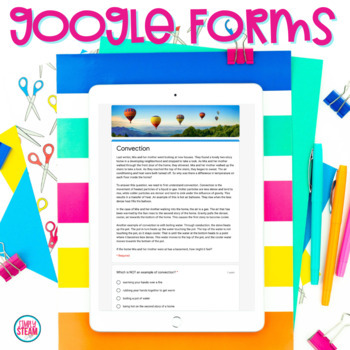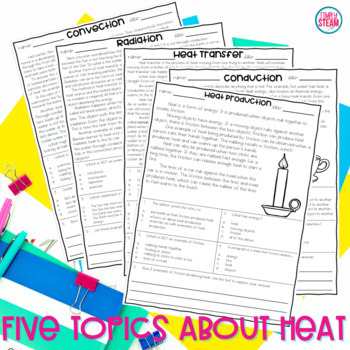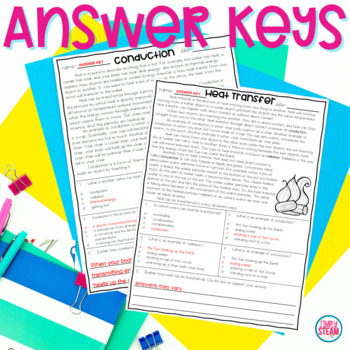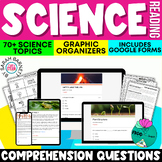Heat Transfer Worksheets | Conduction, Convection, Radiation | Heat Energy
- PDF
- Google Apps™

What educators are saying
Also included in
- Teach students about thermal energy and heat transfer through convection, conduction, and radiation with these easy-to-use heat energy activities. This includes PowerPoints, STEM, quizzes, interactive notebook pieces, and more! This bundle includes: ♨️Heat Energy PowerPoint Lessons & Quizzes ♨️ThePrice $14.50Original Price $21.57Save $7.07
- Struggling to squeeze science into your jam-packed day? You're not alone. Teaching science alongside reading often feels like fitting puzzle pieces from different boxes. But what if you could bridge this gap effortlessly? Introducing Quick Science Passages for Any Time of Day! - your new classroom hPrice $15.00Original Price $54.85Save $39.85
Description
Integrate reading with science so you can save time teaching! These Heat Transfer Worksheets give students clear examples and are easy to understand. Students practice comprehension skills while they learn about heat energy.
Save BIG when you purchase the Science Reading Passages Bundle! Please note this is also a part of my Thermal Energy and Heat Unit.
Heat Energy Reading Passages and Questions include:
- Half to a whole page of reading that's easy to read for students
- 5 comprehension questions (key details) to reinforce ELA standards, including information about conduction, convection, and radiation
- Vocabulary cards with activities
- Graphic organizers or worksheets to extend comprehension
- Answer keys for fast and easy grading
These are perfect for distance learning whether you teach remotely, hybrid, or face-to-face. These reading passages and worksheets are easy to use in Google Classroom.
Thermal (Heat) Energy include:
- Heat production
- Heat transfer
- Conduction
- Convection
- Radiation
Students learn about thermal energy & heat transfer, including conduction, convection, and radiation, with this resource. By the end of the unit, they will understand how heat energy is created and demonstrate the various ways in which heat energy travels.
You may also like:
Hey, are we connected yet? It pays to follow Simply STEAM. We discount all resources at 50% off for the first 24 hours.







